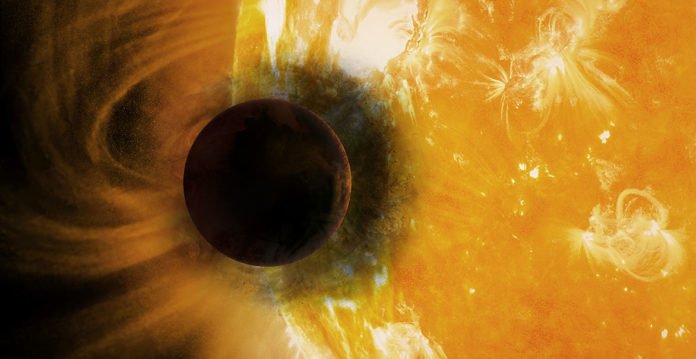For the first ever time, an international team of led by Jessica Spake from the University of Exeter, have discovered evidence of the inert gas on the ‘super-Neptune’ exoplanet WASP-107b, found 200 light years from Earth and in the constellation of Virgo. The discovery was made by using the Hubble Space Telescope.
The strength of the helium signal detected was large enough to make scientists believe that the planet’s upper climate can expand a huge number of kilometers into space. The significant strength of the signal measured exploited a new technique that doesn’t rely on ultraviolet measurements, which have historically been used to study upper exoplanet atmospheres.
WASP-107b is a low-density planet comparable in size to Jupiter, however with just 12% of its mass. Orbiting its host star every six days, it has one of the coolest environments of any of the exoplanets found, in spite of the fact that at 500 C is still profoundly more sultry than Earth.
By breaking down the range of light going through the upper piece of the exoplanet’s air, the specialists could identify the nearness of helium in an energized state.
Now, the discovery is expected to pave the way for scientists to discover more atmospheres around Earth-sized exoplanets across the galaxy.
Tom Evans, a co-author also from the University of Exeter, added: “The helium we detected extends far out to space as a tenuous cloud surrounding the planet. If smaller, Earth-sized planets have similar helium clouds, this new technique offers an exciting means to study their upper atmospheres in the very near future.”
The research is published in the leading scientific journal, Nature.
